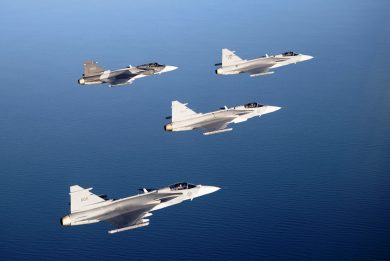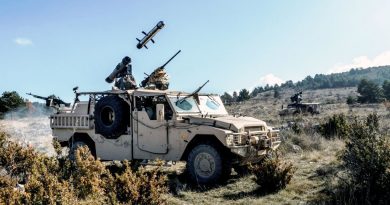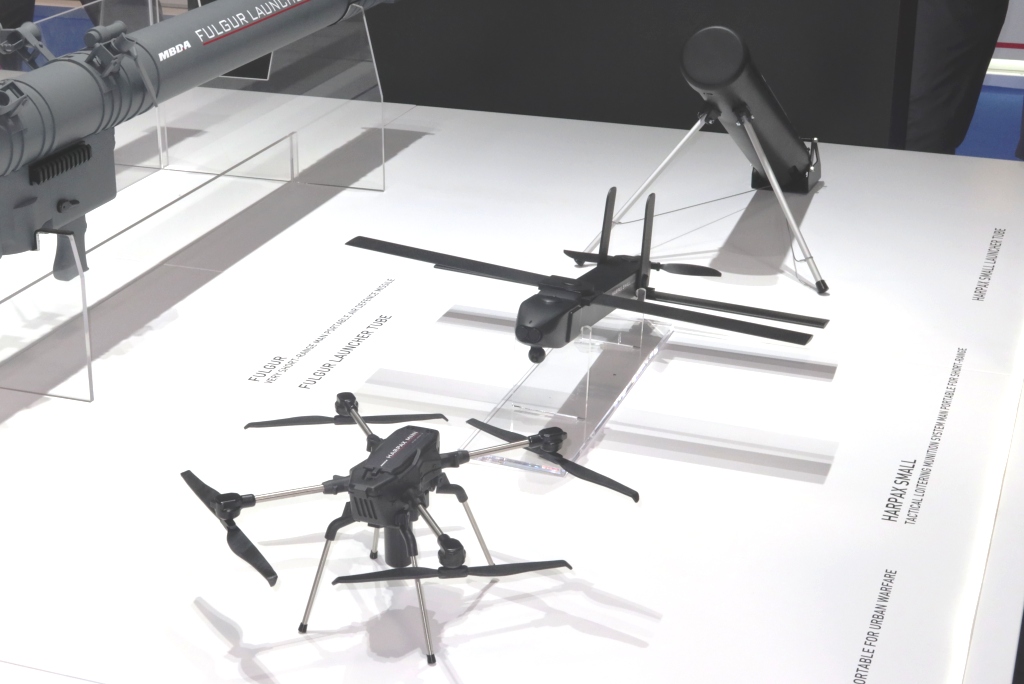
Seafuture 2025 – MBDA launches the Harpax family of loitering munitions
At the exhibition in La Spezia the European missile company unveiled two new loitering munitions, the Harpax Mini and the Harpax Small, the family awaiting for a third and bigger member.
“At this very moment, with the Harpax loitering munitions family, we are responding to a specific need of the Italian Army, which is not yet a requirement,” Cristiano Proietti, sales manager for MBDA Italy’s Land Domain says. While it is the Army that expressed the need for such weapon systems, in Italy it was the Special Forces compartment that first tested this category of weapons, the Special Forces Operations Command having obviously different needs than conventional forces. New reference scenarios, namely the Russia-Ukraine conflict, let the Italian Army joined to express the need, this time for conventional forces, manoeuvre forces, which led to a specific operational requirement being underway. This is currently being integrated at joint level, before becoming officially a requirement.
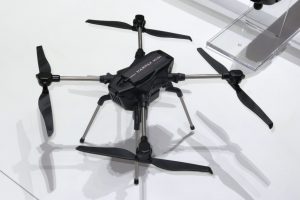
At Seafuture MBDA Italia exhibited a 1:2 scale model of its Harpax Mini, a quadcopter designed to be used in urban canyons. The airframe was provided by an Italian SME specialised in VTOL UAVs, Siralab based in Terni, the aim of the Italian Army being to have a system entirely made in Italy, to ensure national sovereignty and autonomy.
This is what already happened in France, where the French side of the company unveiled the Akeron family of loitering munitions, derived from a French MoD requirement, which programmes were known as Colibri and Larinae, here too France looking for a full-national solution.
Its maximum take off mass is less than 2.5 kg, and includes the 500 grams high explosive fragmentation warhead provided by KNDS Ammo Italy. The Harpax Mini is 860 mm long and wide, and 300 mm high, dimensions being kept within limits to allow the munition to enter a building window, EDR On-Line understood. It has an operational range of 5 km, and an endurance of 20 minutes, its cruise speed being short of 50 km/h. “It has a very high degree of manoeuvrability which allows it to move within an urban context, its lethal payload being capable to neutralise soldiers, machine gun emplacements, light vehicles, or soft-type bunkers.”
To reduce acquisition cost commercial optics that meet specific requirements were used, while the system is as much modular as possible to allow easy replacement of damaged component even at field level.
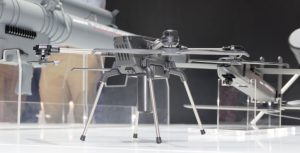
“We cooperate with small and medium-sized businesses, to be able to quickly respond to customers’ needs, to achieve fast prototyping and industrialization, and to allow large production volumes, the Harpax being a munition, which must be produced in high numbers in a very short time,” Proietti said. EDR On-Line understood that an initial rate of 200 Harpax Mini per month might be the target, with the capacity to considerably increase that volume should the need arise. Being a simple and modular system, industry and military are even considering assembling it in the area of operations.
Last March in the Italian Alps EDR On-Line was present at the “Volpe Bianca” exercise, where the Harpax Mini performed within the tactical bubble, providing information to commanders, while being protected by the bubble defensive assets. An ISR UAV identified a target, relayed the information to the bubble, allowing the commander on the field to quickly task the Harpax Mini to hit the target. At that time no pictures were allowed on the Harpax Mini and no details were provided. As for the Haroax Small, this was also used during the exercise, and some information were provided.
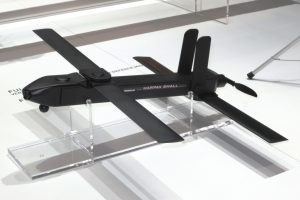
Switching now to the Harpax Small, this is a fixed-wing, tube-launched loitering munition which is launched under the impulse of a pneumatic system. When aerodynamic surfaces are folded the airframe is 1,000 mm long, and has a section of 130×130 mm. Once the munition leaves the launch tube wings and tail fins are deployed, wingspan becoming 1,000 mm. The Harpax Small has a take-off mass of less than 8 kg, including the warhead of around 1.5 kg This also is an HE-FRAG device, developed by the same company that is providing the Harpax Mini lethal package, and according to information gathered at the exhibition is capable to destroy up to light armoured vehicles.. This munition has an operational range of 15 to 20 km and 25 to 40 minutes endurance depending on payload and target distance, its cruise speed being short of 200 km/h. At Seafuture a 1:5 model was exhibited.
Calling the Harpax Small a munition might well be reductive, as the front section, which usually hosts the warhead, is fully modular and can host other modules carrying for example improved ISTAR sensors or electronic warfare effectors, a module capable to transport small high priority loads being also considered.
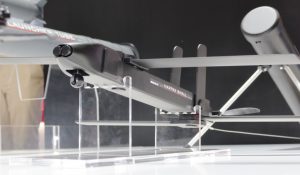
The airframe of the Harpax Small is provided by a different SME, of course Italian, Sky Eyes Systems, based in Foligno, the aim being to avoid having the same provider to ensure that in case of mass production a single company will not have to manufacture both the Mini and the Small, which might well become a bottleneck.
As said MBDA France developed the Akeron family of loitering munitions, and EDR On-Line understood that the work done on those products, also one quadcopter and one fixed-wing, was shared among the two sides of the company to reduce development time and cost, the cooperation relating mostly on software.
The fact that the Harpax family of loitering munition was launched at Seafuture 2025 shows well that MBDA Italia is considering these systems also for naval use.
A further exercise to be conducted together with the Italian Army is planned in November 2025, which will include the presence of sensors and effectors, the deployment of the tactical bubble, the presence of jamming systems to make the scenario as credible as possible, and this time the target will not be static but will be a vehicle on the move. These activities, carried out with the potential customer, should allow reducing the qualification time once the green light will be given for the acquisition.
EDR On-Line learned that a third member of the Harpax family is under way, the Harpax Medium. This will have an 80 km range, of course a much bigger payload, and will be flanking artillery providing an indirect fire support at range. According to MBDA sources the concept should be frozen by September 2026, and as in the case of the smaller members of the family cost control will remain an issue, MBDA aiming to remain under the market benchmark cost with all its loitering munitions.
Photos by P. Valpolini

